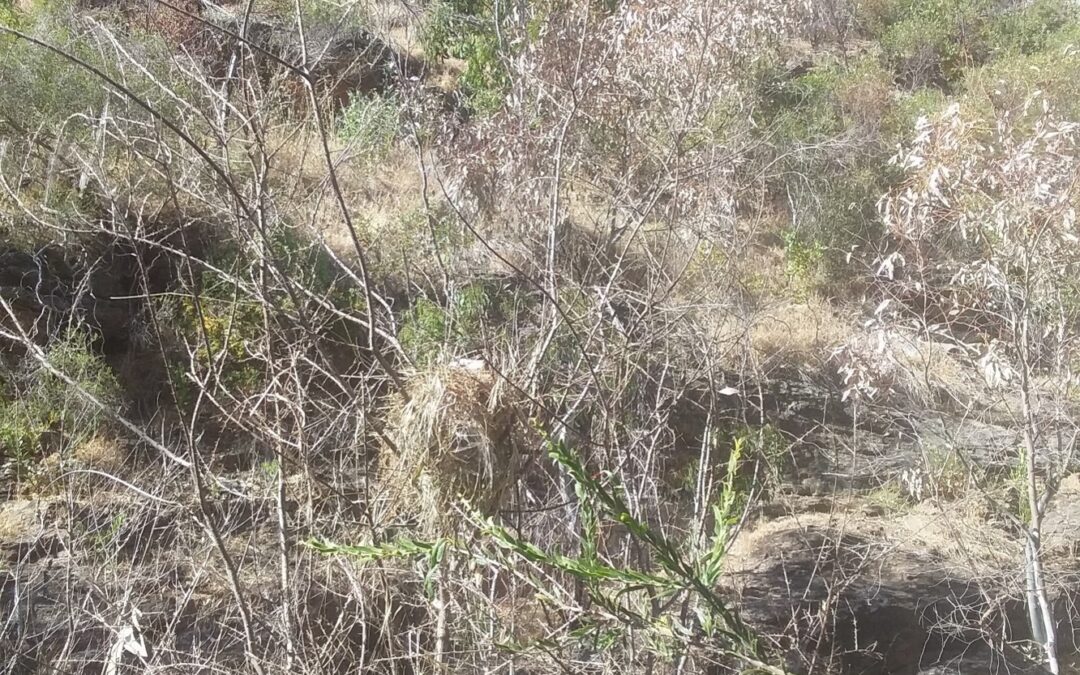The Tangier Pea Story from Para Wirra
When I was getting to know Para Wirra as a new Ranger in 1998, I noticed there was one hillside in the South Para Valley that turned an attractive shade of pink-purple every November. A creeper not unlike the garden Sweet Pea was emerging from seed each winter and twining and smothering Grass trees, Sticky hop shrubs, Correas and all the lilies, Rock ferns and other small native plants that cover the lower slopes of the valley and the river bank.
I had seen the extent of this garden escape weed in the Torrens Gorge, Paracombe, Montacute and such places where it seems to be accepted as being beyond any control and now part of the landscape both on and off National Parks Reserves. It occurred to me that this infestation in Para Wirra might be relatively young and it was relatively small, no more than 2ha. It seemed to be centred on a track that crosses the South Para valley through very steep and rugged country and surveys found it nowhere else in the park
So we embarked on a mission to get rid of it and anyone who has tried to control hard seeded pea family weeds will understand the difficulty of this project. With the help of Friends of Para Wirra and a few staff members we undertook an annual program to simply pull it up each season when its showy flowers gave it away and before seed set. Initially we bagged and removed it, filling a rubbish skip but then we realised if we got the timing right we could just bundle it up, releasing the smothered grass trees and shrubs and leave it to slowly rot. As long as no new seed formed, we had to win eventually didn’t we? And with no damage from herbicide use in the river valley.
I have to say that it took many years before the population suddenly dropped to a level where a handful of volunteers could bundle all the Tangier Pea vines up in a couple of hours; we had depleted the seed bank and no new seeds were being added because of our timing and thoroughness.
Well this November is the 25th Anniversary of the Tangier Pea control program and I can report that on my visit to the South Para this month, now as a volunteer, it took me just an hour and a half to collect 47 plants from what was once a dense 2ha population requiring 100s of person hours effort each year. Over the years we have controlled olives and boneseed on those river banks as well and almost eradicated Blackberry and Prickly pear. Now Red browed finches nest in the dead olives, the river bottlebrush, Correa and grass trees have reclaimed their river banks and Peregrine falcons and Euros add colour and interest to the valley. It really didn’t need the addition of a dominating European flower.
Steve Taylor Friends of Para Wirra




